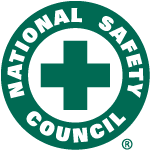"Learning occurs through recognition of error". It is a simple precept. Yet, the recent train wreck in Spain that killed 79 people is a tragic reminder that human behaviour is sometimes very difficult to modify despite the recognition of error.

Stemming from the 2008 train accident in California that killed 25 people and injured 135 others and the irrefutable research regarding the dangers of distraction due to mobile device use while operating motor vehicles, mobile device use policies are increasingly common across corporate America.
However, leaders in safety are well aware that paper policies and education related to mobile device use in vehicles are not enough. Safety audits and primary research results show that policy infractions invariably reach 100% of employees when measured over a 30-60 day period.
Technology safety solutions can help us address the problems that the pervasive use of mobile products has created. Policy conformance and enforcement tools can assist employees in adhering to policies and can help mitigate a major source of risk and liability for corporations.
Our goal at Aegis is help create a safer environment for employees and the public at large. Call us to schedule a demo today.

 This is a critical issue because the official state records drive awareness, legislation, funding and solutions.
This is a critical issue because the official state records drive awareness, legislation, funding and solutions.
